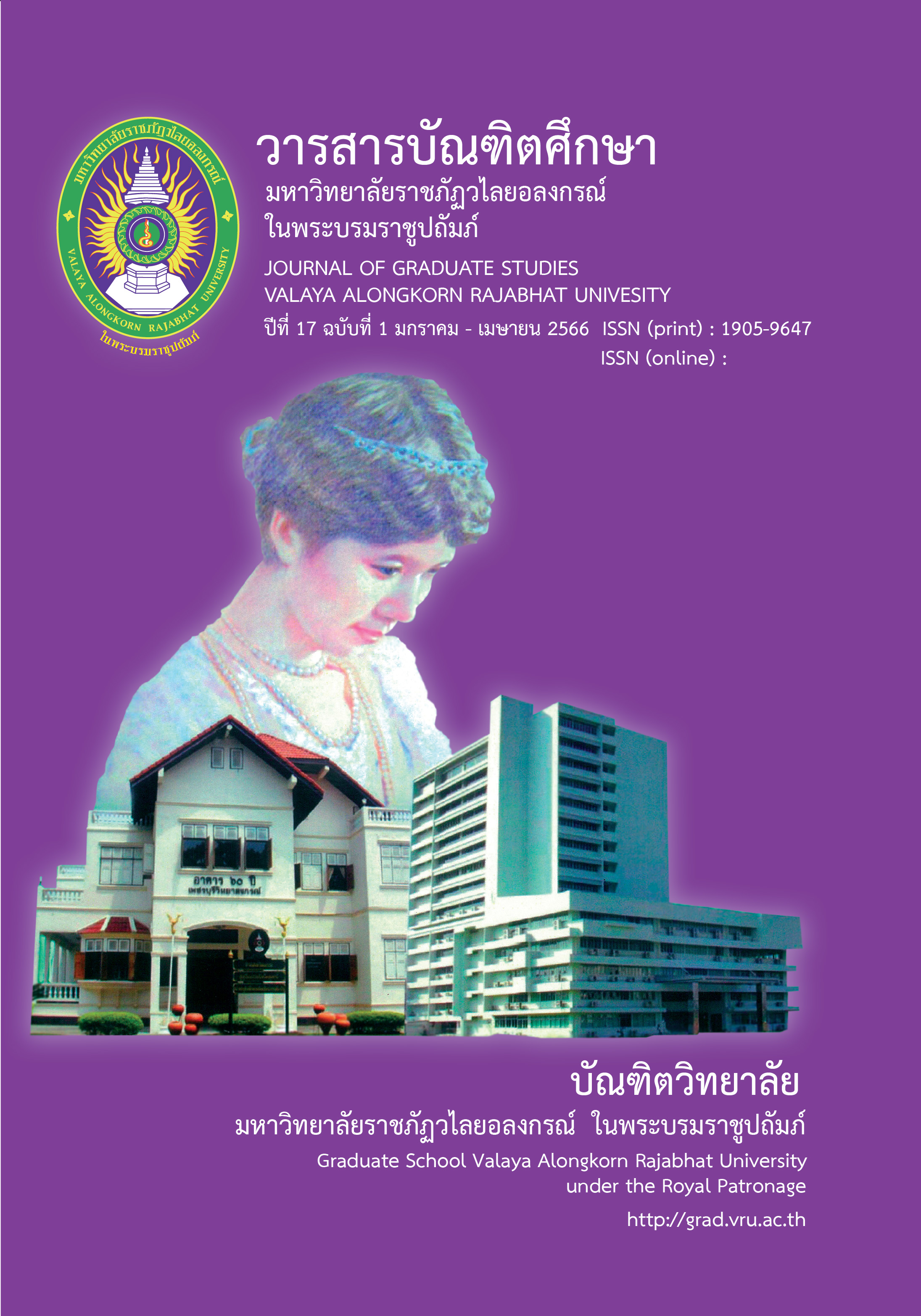A GUIDELINE FOR LEARNING THAI LITERATURE IN THE DIGITAL AGE USING THE CONNECTIVISM APPROACH
Main Article Content
Abstract
Thai literature is something that is far away from learners in the digital age. Therefore, teachers should adjust the paradigm of learning that literature does not necessarily adhere to traditional literature, and should use literature which has been adapted to become up-to-date to use as a link with the lesson. Using Connectivism it consists of four step: 1) content accumulating, 2) remixing, 3) repurposing, and 4) sharing. Teachers and learners have to adjust their roles in order to be more in line with the tendency of organizing learning through the connection of various online networks. Therefore, the management of learning Thai literature using the concept of Connectivism is regarded as a success of learning Thai literature amid the change in the digital world as well.
Article Details

This work is licensed under a Creative Commons Attribution-NonCommercial-NoDerivatives 4.0 International License.
บทความทุกเรื่องได้รับการตรวจความถูกต้องทางวิชาการโดยผู้ทรงคุณวุฒิ ทรรศนะและข้อคิดเห็นในบทความ Journal of Global of Perspectives in Humanities and Social Sciences (J-GPHSS) มิใช่เป็นทรรศนะและความคิดของผู้จัดทำจึงมิใช่ความรับผิดชอบของบัณฑิตวิทยาลัย มหาวิทยาลัยราชภัฏวไลยอลงกรณ์ ในพระบรมราชูปถัมภ์ กองบรรณาธิการไม่สงวนสิทธิ์การคัดลอก แต่ให้อ้างอิงแหล่งที่มา
References
Autthawuttikul, S. & Chantaranamchoo, N. (2019). gaan pát-tá-naa kroo meu aa-chêep pêuua sòng sĕrm gaan chái ngaan ICT yàang sâang săn nai chán riian [Development of professional teachers to promote creative use of information and communication technology in classrooms]. Veridian E-Journal, Silpakorn University. 12(1), 1 – 13.
Dorrow, S. (2009). Connectivism learning theory: instructional tools for college courses. Master’s thesis, Western Connecticut State University.
Downes, S. (2012). Connectivism and connective knowledge: essays meaning and learning networks. National Research Council Canada. Retrieved from: http://www.downes. ca/files/books/Connective_Knowledge-19May2012.pdf
Jumnian, M. and Korrakot, J. (2018). bprà-yòht · bpan-hăa láe naew taang gâe kăi gaan chái sèu on-lai nai gaan riian yàang mee bprà-sìt-tí-pâap kŏng rohng riian [Benefit, problems and solutions of using online media in studies with efficiency in schools, Nakhon Si Thammarat Province]. Ratchaphruek Journal 16(3), 113-121.
Khlaisang, J. (2017). gaan pà-lìt láe chái sèu yàang bpen rá-bòp pêuua gaan riian róo nai sà-dtà-wát têe yêe-sìp-èt [Systematical creating and using media for educaion in 21 century]. Bangkok: Chulalongkorn University Printery.
Khlaisang, J. and Koraneekit, P. (2016). gaan òk bàep wép pêuua gaan riian gaan sŏn naew taang gaan bprà-yúk chái săm-ràp gaan riian bàep pà- sŏm pà-săan ee lern-ning láe on-lai lern-ning [Web design for education and application for e-learning and online learning mix-method education]. Bangkok: Chulalongkorn University Printery.
Malitong, K. (2005). ték-noh-loh-yee gaan sèuk-săa láe ná-wát-dtà-gam [Educational technology and innovation]. Bangkok: Arun Printing.
National Statistical Office. (2021). wai rûn · in-têr-nét·gem on-lai [Teenagers: internet: online game]. Retrieved from http://service.nso.go.th/nso/web/article/article_47.html
Salmon, G. (2004). E-Moderating the Key to Online Teaching and Learning. 2nd Edition. London: Routledge.
Sanyal, B. C. (2001), 'New functions of higher education and ICT to achieve education for all', Paper prepared for the Expert Roundtable on University and Technology-for- Literacy and Education Partnership in Developing Countries, International Institute for Educational Planning, UNESCO, September 10 to 12, Paris.
Siemens, G. (2005). Connectivism: a learning theory for digital age. International Journal of Instructional Technology and Distance Learning. 2(1), 3-10.
Sounsamut, P. (2004). pôo sèp gàp gaan dàt bplaeng néuua hăa láe dtuua lá-kon rêuuang prá à-pai má-nee nai wát-tá-ná-tam bprà-chaa ní-yom nai chûuang bpee pút sàk-gà-ràat · sŏng-pan-hâa-rói-sèe-sìp-hâa · sŏng-pan- hâa-rói-sèe-sìp-hòk [Audience and the adaptation of content and characters of 'Phra Aphai Mani' in Thai popular culture during 2002-2003]. Degree of Master of Arts in Thai. Chulalongkorn University.
Suwannatthachote, P. (2018). sà-mát-tà-ná láe bòt bàat pôo sŏn on-lai gaan sà- daeng dton láe sà-nàp-sà-nŭn pôo riian [Online instructor competencies and Roles: Instructor presence and Learner support]. Journal of Graduate Studies Valaya Alongkron Rajabhat University. 12(2), 244 – 256.
Wongtip, K. (2015). gaan dàt bplaeng néuua hăa láe dtuua lá-kon kŏng wan-ná-ká-dee chà-bàp gaa-dtoon pŏn grà-tóp dtòr kun-kâa dâan kwaam ngaam kŏng wan-ná-ká-dee bàep chà-bàp láe bòt bàat kŏng kroo pôo sŏn wan-ná-ká- dee [The modifications of the content and Character in cartoon literature version: The hazardous impacts onto the fine values of the clas]. Srinakharinwirot Research and Development (Journal of Humanities and Social Sciences). 7(13), 226-237.


